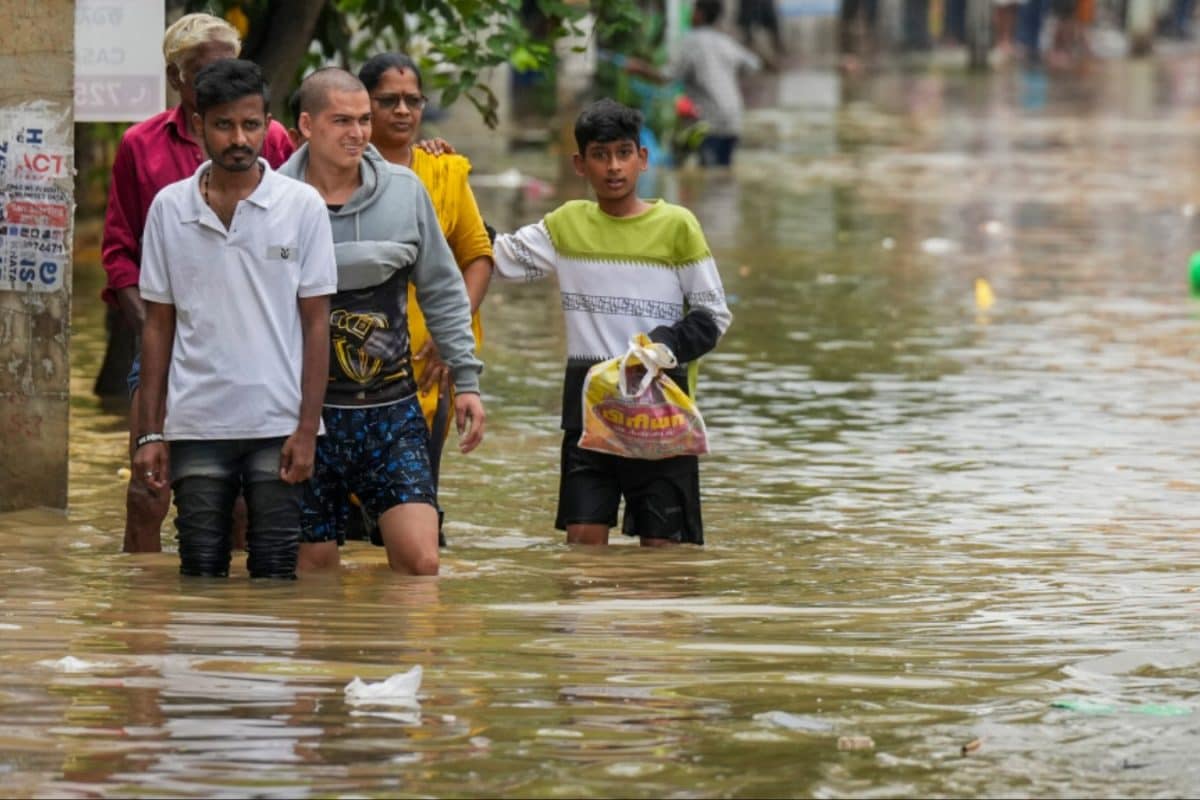

Bengaluru is reeling from the aftermath of a heavy downpour that claimed the lives of three people and inundated vast swathes of the city. The intense rainfall, which began on the night of Sunday, May 18, 2025, and continued into the early hours of Monday, May 19, 2025, saw the city record a staggering 105.5 mm of rain in just 24 hours. This deluge has exposed the city's inadequate infrastructure and drainage systems, leading to widespread flooding, traffic chaos, and immense hardship for residents.
The convergence of two low-pressure systems, coupled with intense thunderstorms, triggered the heavy rainfall that battered Bengaluru. The southern, northern, and eastern parts of the city bore the brunt of the downpour, leaving a trail of destruction in its wake. The India Meteorological Department (IMD) had issued a 'yellow' alert initially and later an 'orange' alert, indicating the possibility of heavy to very heavy rainfall across Karnataka, including Bengaluru. The forecast suggests continued rainfall for the next few days, raising concerns about further inundation and potential damage.
The torrential rains brought Bengaluru to its knees, with roads, bus stands, and residential areas submerged under water. Many areas, including ST Bed, Ejipura, Koramangala, BTM, Austin Town, Manyata Tech Park, BDA areas, and parts of Shanthi Nagar, were severely affected. Commuters faced immense difficulties as traffic snarls brought the city to a standstill. Key junctions like Silk Board, Bommanahalli, and HRBR Layout were heavily waterlogged, causing significant delays and disruptions. Several underpasses and flyovers were closed to traffic due to flooding, further exacerbating the traffic situation. A portion of Shantinagar bus stand was also flooded, adding to the woes of commuters.
The flooding has not only disrupted daily life but has also caused extensive damage to property. Hundreds of homes have been flooded, with water entering houses and damaging belongings and electronic items. In Ejipura alone, over 150 homes were reported to be flooded. Residents in low-lying areas such as HBR Layout and Sai Layout were particularly affected, with water levels reaching up to 5 feet in some areas. Visuals from across the city showed people wading through knee-deep water, highlighting the severity of the situation.
Tragically, the heavy rains have resulted in the loss of three lives. One of the deceased was identified as Shashikala D, 32, a sweeper who died after a compound wall collapsed in Whitefield.
In response to the crisis, authorities have initiated relief measures and are working to clear waterlogged areas. The Bruhat Bengaluru Mahanagara Palike (BBMP) is actively working to clear clogged drains and remove uprooted trees and debris from roads. Chief Minister Siddaramaiah and Deputy Chief Minister D.K. Shivakumar are expected to visit the affected areas to assess the situation and address the grievances of the people. The State Disaster Response Force has also been deployed to rescue residents in severely inundated areas.
The recent flooding has once again raised questions about Bengaluru's preparedness to handle heavy rainfall. The city's infrastructure, particularly its drainage system, has come under scrutiny, with many experts pointing out the need for better planning and execution of flood mitigation measures. Ongoing construction and restoration work, such as the Bellandur lake project, have also been cited as contributing factors to the flooding. As Bengaluru grapples with the aftermath of this natural disaster, it is evident that long-term, sustainable solutions are needed to address the city's vulnerability to flooding and ensure the safety and well-being of its residents.